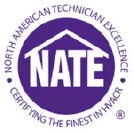COMMON FURNACE PROBLEMS IN COLD WEATHER
Every Winter, the St Louis area always has that one to two-week period of brutally frigid weather. During this stretch, your heating system is often pushed to the limit in order to maintain comfortable temperatures inside your home. This is also the most likely time you could experience furnace problems.
While we always recommend calling a professional heating technician to perform any sort of furnace repair, here is a list of common furnace problems you may experience in extremely cold weather
Cracked Heat Exchanger
A cracked heat exchanger can often be a worst-case scenario when it comes to furnace problems during the winter. Most St Louis area HVAC companies will immediately recommend replacing your furnace when this happens. The purpose of the heat exchanger is to separate the warming flame from the air inside your home. The energy source your furnaces operate on warms the heat exchanger which then warms the being pushed through your duct system. When a cold front hits the St Louis area, it can often cause overheating.
This factor often leads to heat exchanger cracks. The heat exchanger is a critical component of a furnace system as it prevents both carbon dioxide and energy fumes from leaking inside your air ducts. With that being said, a lot of heating and cooling companies will use a cracked heat exchanger as an excuse for a homeowner to commit to furnace replacement. It’s important to have the technician point out the crack in the heat exchanger before deciding on replacing your entire furnace system.
Common Causes Of Cracked Heat Exchangers
- Overheating A Home
- Clogged Or Dirty Furnace Filters
- Over-sized Furnace Systems
Dirty Furnace Filters
You would be surprised by how many furnace problems originate from dirty furnace filters. This is often considered the most common cause of most furnace malfunctions. When a furnace filter is clogged, it restricts airflow. This leads to your furnace overworking to compensate for the lack of air. A variety of different furnace problems can occur under these circumstances.
Problems That Occur When Your Furnace Filter Is Clogged
- Cracked Heat Exchanger– Just as we noted above, when a dirty filter is preventing airflow, it can cause your heat exchanger to overheat which in turn can result in a cracked heat exchanger.
- Increased Utility Bills– Lack of airflow can lead to your furnace running more frequently for longer periods of time. Dirty furnace filters absolutely kill the energy efficiency of your heating system.
- Limit Switch Failure– The limit switch is a safeguard that shuts your furnace down when the heat exchanger overheats. When the limit switch fails, your furnace simply will no longer turn on.
Slipped Furnace Belt
There are some instances when you may be experiencing furnace problems, but your furnace is continuing to heat your home adequately. A slipped furnace belt is a primary example of this. When your furnace starts making odd noises or you notice it rattling, this can often be the sign of a slipped furnace belt. The furnace belt connects the fan to the blower motor. When the belt slips or breaks, it produces an irritating squealing sound.
Furnace Not Igniting
Most new furnace systems have moved away from traditional pilot lights and now rely on electronic ignition systems as a way to increase efficiency. The two types of electronic ignition systems used today are an intermittent pilot system and a hot surface ignition system.
Intermittent Pilot System (IP)
Intermittent pilot systems are commonly used in induced draft furnaces. This type of electronic ignition system uses a high voltage spark to ignite your fuel source when the thermostat signals the furnace to heat. The primary burner uses a flame sensing rod to signal the pilot has been lit. The flame then turns off when the heating cycle is complete and remains off until your thermostat triggers the next heating cycle. When the intermittent pilot system is not working properly, your furnace will not turn on.
Hot Surface Igniter (HSI)
The hot surface igniter is the most common electronic ignition system manufactured today. This igniter is commonly comprised of silicon nitride or carbide. It heats using electricity and ignites your furnace as the gas enters through the burners. Common problems with hot surface igniters are often attributed to mishandling during the furnace installation. If oil from the installer’s hands makes contact with the igniter, it can often lead to malfunctions. Another common cause of HSI failure is the voltage in your electrical circuit is too high.
Broken Thermostat
The thermostat is pretty much the brains of your heating and cooling system. When your thermostat is experiencing problems, your entire heating and cooling system usually does as well. Believe it or not, the most common thermostat problem is dead batteries. However, if you are still experiencing furnace problems despite new batteries, it might not be a bad idea to call a professional.
Bad Thermostat Symptoms
- Thermostat No Longer Controlling The Temperature Of Your Home
- Noticeable Temperature Swings Despite A Consistent Temperature Being Set On The Thermostat
Superior Is Here To Help Solve Any Furnace Problems
No matter what the problem is, we are always here to help assist in getting your furnace back up and running properly. Our technicians always seek to repair a furnace before recommending replacement. Each technician keeps almost all the necessary furnace parts on hand in order to repair your heating system as quickly and efficiently as possible. We currently hold a same-day service rate of over 98%. Meaning if we go to your home, there is over a 98% chance we will be able to fix your furnace that same day.
Schedule Furnace Repair
If you are experiencing furnace problems, schedule a repair call our office or fill out the online form below.
"*" indicates required fields





